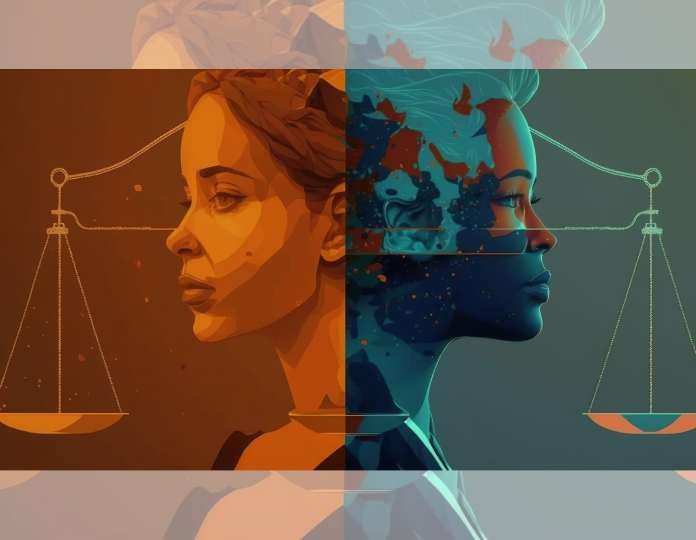Pretty privilege is a social concept that shows the advantages that certain individuals receive in the context of life because they are perceived as conventionally attractive. It is usually associated with factors like race or socioeconomic status, with the main focus on the benefits that derive from physical appearance. In pretty privilege, there exists a preferential treatment of gaining opportunities and positive assumptions where the people who are seen as attractive receive completely based on the factor of looks. This takes place in various areas of life such as education, career, relationships and social interactions.
The effects range among a wide number of areas specifically in the social context and formation of social bonds as individuals that benefit from pretty privilege, find it easier to initiate and maintain romantic relationships. They also receive more positive attention from peers and colleagues. However, this is a dual-edged sword as it can lead to insecurities and doubts as the attainment of achievements are solely based on merit or appearance.
In a workplace setting, attractive individuals are perceived as competent, even if their skills are not align with the perception based on looks. This also results in getting job offers, promotions and salary rises.
Pretty privilege also extends to educational settings. Educators unknowingly give preferential treatment to attractive students on the assumption of being more capable or attentive.
As pretty privilege is a phenomenon rooted in the cognitive and social realms, it gives insights of the way human perceptions and interactions are shaped by physical appearance.
Along with that, it also has psychological aspects that portray a complex interplay between the factors involved:
1) Evolutionary Aspects
From an evolutionary standpoint, humans seek out qualities that are associated with good health and reproductive fitness. Thus, individuals that exhibit traits indicative of genetic health are often deemed attractive. This primal drive in modern-day takes the form of pretty privilege.
2) The Halo Effect
The halo effect is a cognitive bias where the tendency causes people to associate one positive attribute here, the physical attractiveness with a range of other positive qualities without substantial evidence.
3) Confirmation Bias
Confirmation bias leads people to interpret information in a way that confirms their existing beliefs. When pretty privilege is present, observers may unconsciously interpret the behavior of an attractive individual more positively, actively seeking evidence that supports the perception of their attractiveness. This can lead to a self-fulfilling prophecy where the individual actually starts to embody the assumed positive qualities.
4) Stereotyping
Biases influence perceptions and judgments at a subconscious level. This can lead to unfair assumptions about competence, personality, and potential.

5) Social Comparison Theory
The social comparison theory suggests that individuals evaluate themselves by comparing their attributes to those of others. Experiencing envy or low self-esteem as comparing themselves to individuals with pretty privilege, potentially leading to negative
self-perception.
Along with the above, there is an intricate relationship between pretty privilege and mental health:
1) The Fragile Nature of External Validation
Relying on pretty privilege for self-worth can lead to an unstable sense of identity. When the validation tied to appearance diminishes, individuals might experience feelings of inadequacy, anxiety, and even depression. Societal pressure to maintain a certain level of physical attractiveness can exacerbate this vulnerability
2) Comparison and Envy
Individuals who benefit from pretty privilege might inadvertently contribute to the mental health struggles of those who don’t conform to conventional beauty standards. Constant comparison fosters envy and low self-esteem resulting in negative impact on mental well-being.
3) Self Doubt
Self-doubt can lead to increased tension, anxiety, and a dread of being revealed as less talented than thought.
4) Isolation
Pretty privilege results in isolation from experiences. It becomes challenging to form genuine connections and leads to feelings of loneliness.
5) The Pressure to Maintain Appearance
The expectation to maintain a certain level of attractiveness that leads to body dissatisfaction, disordered eating habits and other mental health issues like stress and self-criticism.
To tackle the effects of pretty privilege there exists a need to cultivate healthy mechanisms:
1) Cultivating Mental Resilience
Recognizing the potential downsides is the prime focus. Building self-esteem based on inner qualities, accomplishments and personal growth for healthy mental well-being.
2) Authenticity and Inclusivity
Developing a culture that values authenticity and promotes a diverse range of physical attributes reduces the pressure to conform to narrow beauty standards. Embracing individuality in a diverse context creates a more inclusive environment.
3) Seeking Professional Help
Individuals facing the psychological impacts of privilege need to consider seeking support from mental health professionals. Therapy addresses issues related to self-esteem, body image, and the questions tied to appearance.
4) Focusing on Inner Qualities
Encouraging a shift in focus from physical appearance to inner qualities helps to negate the exclusivity of pretty privilege. Emphasizing traits like intelligence, kindness, empathy, and skills can create a more balanced perspective on what truly matters.
5) Critical Media Viewing
A critical viewing of beauty represented in the mainstream media is never the right replication of reality.
Thus, separating the portrayal in media and reality becomes essential.
In conclusion, the psychology of pretty privilege underscores the intricate ways in which human perception, biases, and social dynamics intertwine. By delving into the cognitive mechanisms that drive these phenomena, we can work toward a more equitable society that values individuals for their true qualities, rather than their appearance.
Read More Articles:













Leave feedback about this